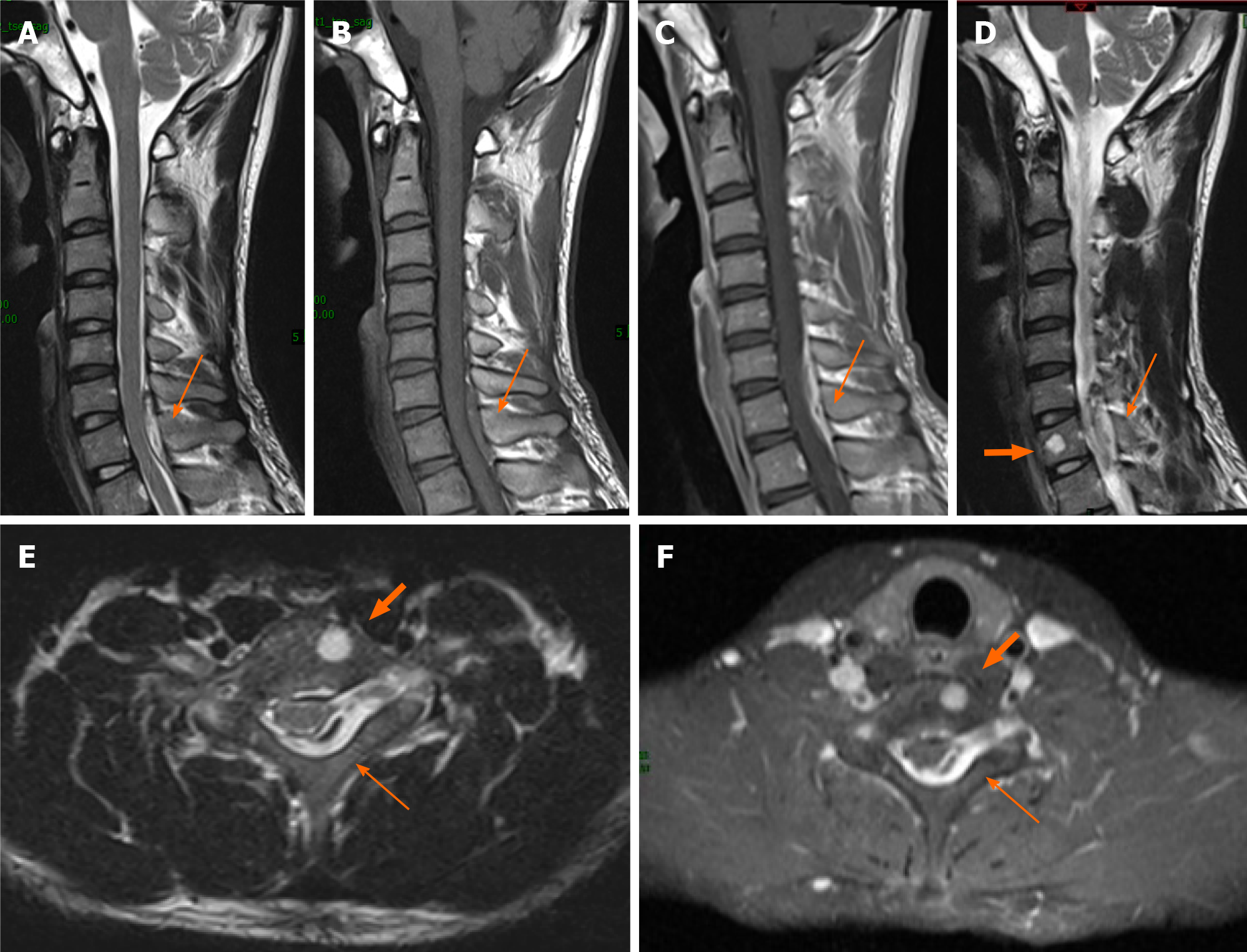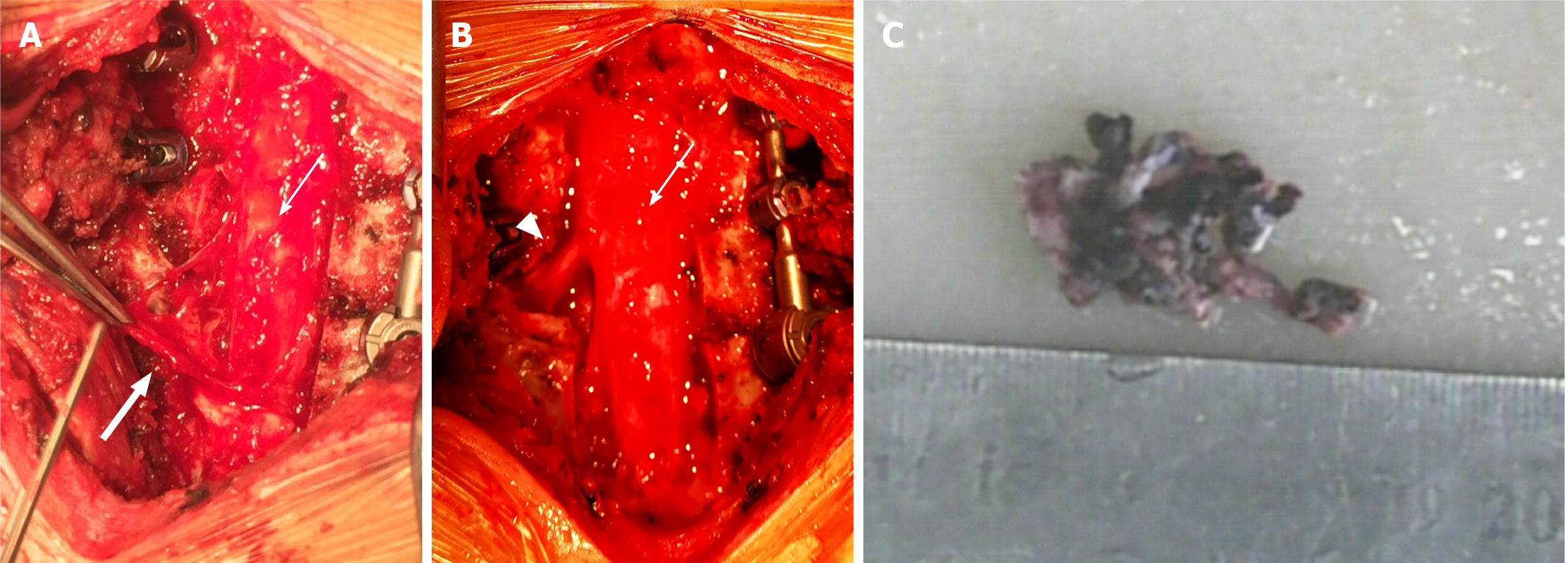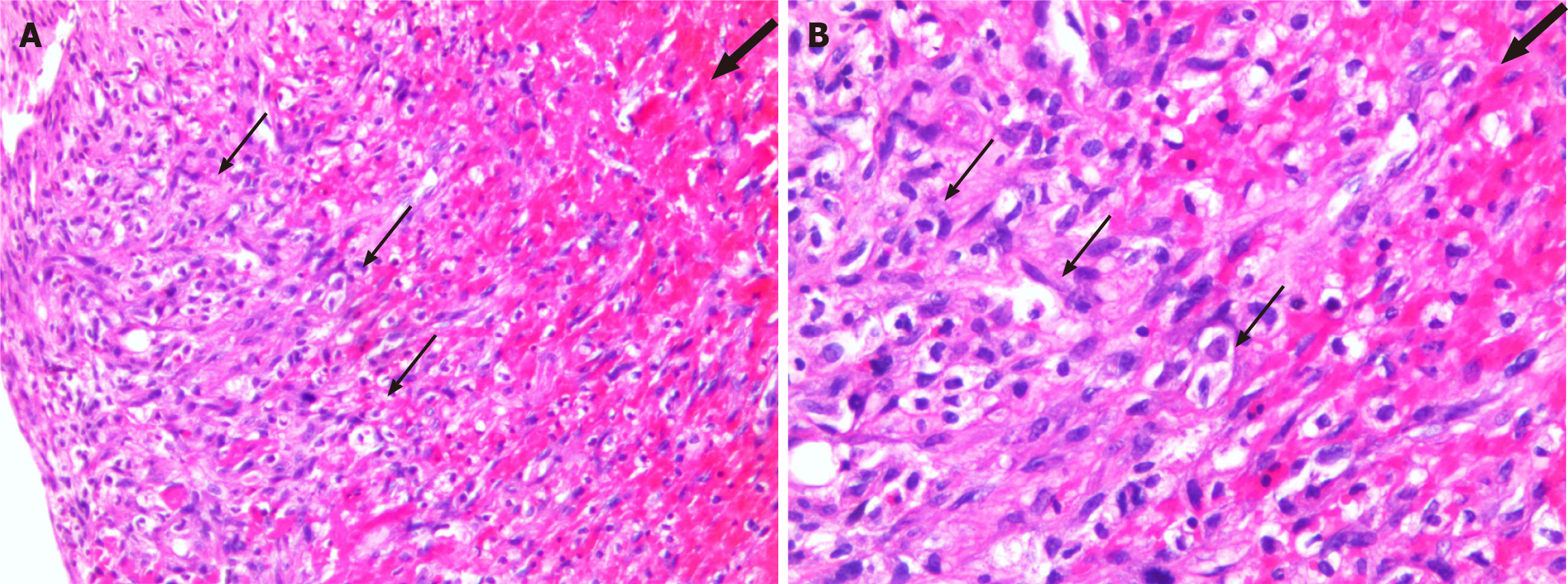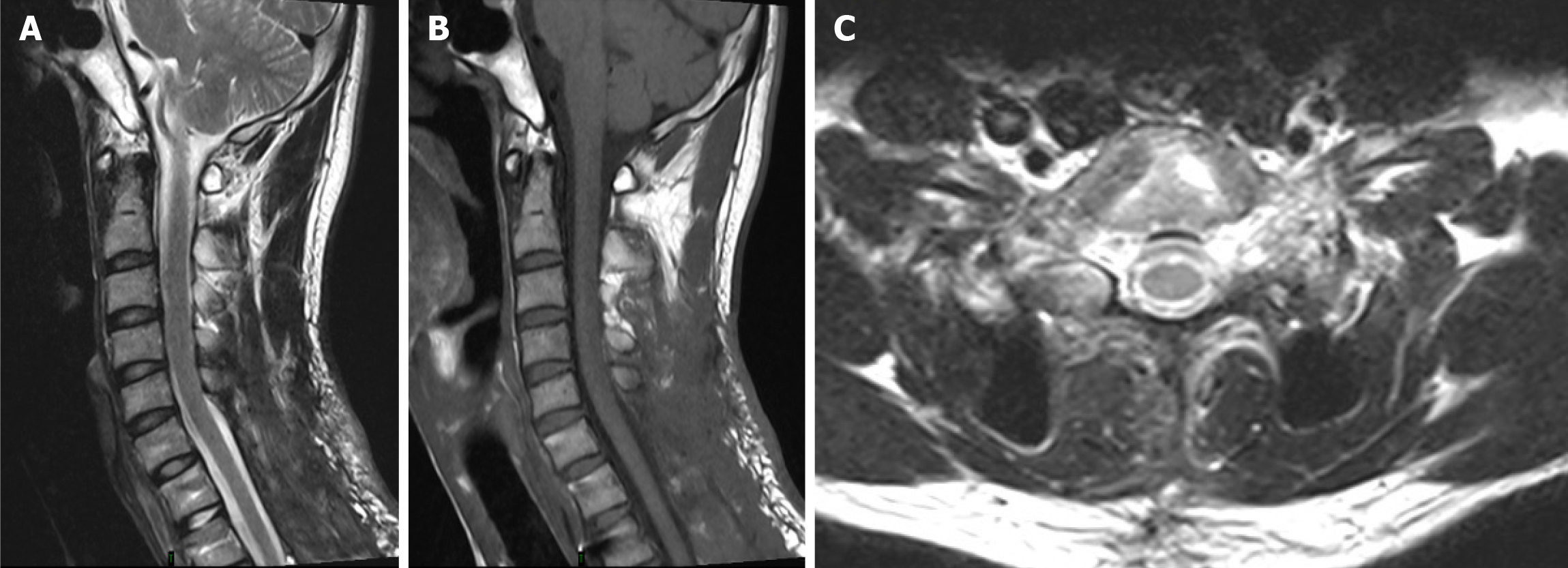Copyright
©The Author(s) 2021.
World J Clin Cases. Dec 6, 2021; 9(34): 10681-10688
Published online Dec 6, 2021. doi: 10.12998/wjcc.v9.i34.10681
Published online Dec 6, 2021. doi: 10.12998/wjcc.v9.i34.10681
Figure 1 Preoperative magnetic resonance imaging.
A and D: Sagittal T2-weighted imaging (T2WI); B: Sagittal T1-weighted imaging (T1WI); C: Sagittal T1WI of the spine with contrast; E: Axial T2WI; F: Axial T1WI with contrast. A posterior spinal epidural mass located from C6 to T1 (thin arrow) appeared high signal intensity on T2WI sagittal and axial images, and low signal intensity on T1WI images. A gadolinium-enhanced scan reveals inhomogeneous enhancement. And a 0.5 cm × 0.5 cm × 0.6 cm-sized round tumor (thick arrow) can be seen on the left side of the C7 vertebral body; high signal intensity is observed on T2WI and homogeneous enhancement is detected on T1WI after contrast agent administration.
Figure 2 Intraoperative images.
A: Operative view of a dark red, nodular, highly vascularized epidural mass (thick arrow) measuring 3 cm × 1.5 cm × 1 cm compressing the left side of the spinal cord (thin arrow) after C6-T1 Laminectomy. B: View of the surgeon after complete resection of the mass and decompression of dura (thin arrow) and left C7 nerve root (triangle). C: Nodular fragment of the lesion.
Figure 3 Histological features of the epidural mass.
A: Hematoxylin-eosin (HE); × 100; B: HE × 200. Histopathological pictomicrograph shows dilated thin-walled vessels lined by a monolayer of obese endothelial cells (thin arrows). The lumen appears to be filled with organizing thrombi (thick arrow).
Figure 4 Postoperative magnetic resonance imaging at 6-mo follow-up.
A-C: Magnetic resonance imaging showing total relief of the previously noted spinal cord compression and no signs of recurrence.
Figure 5 Patient timeline.
MRI: Magnetic resonance imaging; IPEH: Intravascular papillary endothelial hyperplasia.
- Citation: Gu HL, Zheng XQ, Zhan SQ, Chang YB. Intravascular papillary endothelial hyperplasia as a rare cause of cervicothoracic spinal cord compression: A case report. World J Clin Cases 2021; 9(34): 10681-10688
- URL: https://www.wjgnet.com/2307-8960/full/v9/i34/10681.htm
- DOI: https://dx.doi.org/10.12998/wjcc.v9.i34.10681













